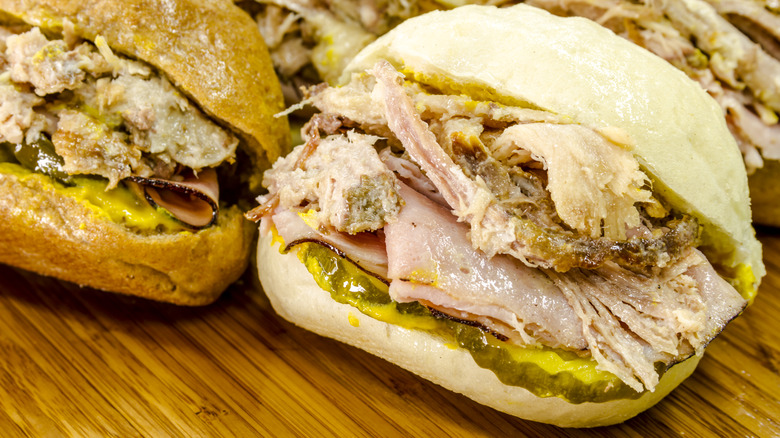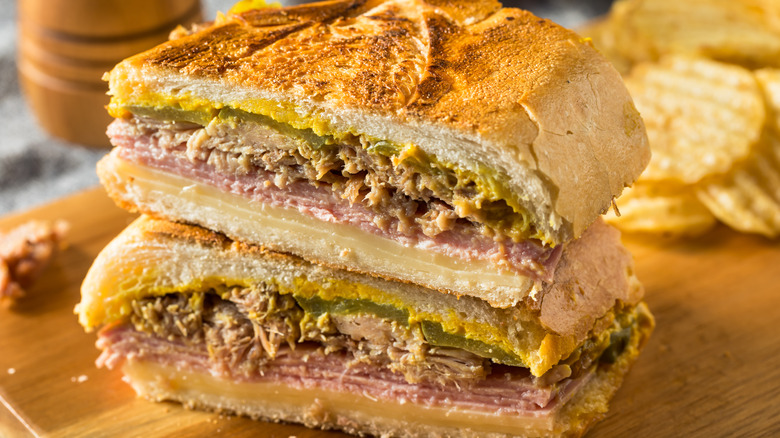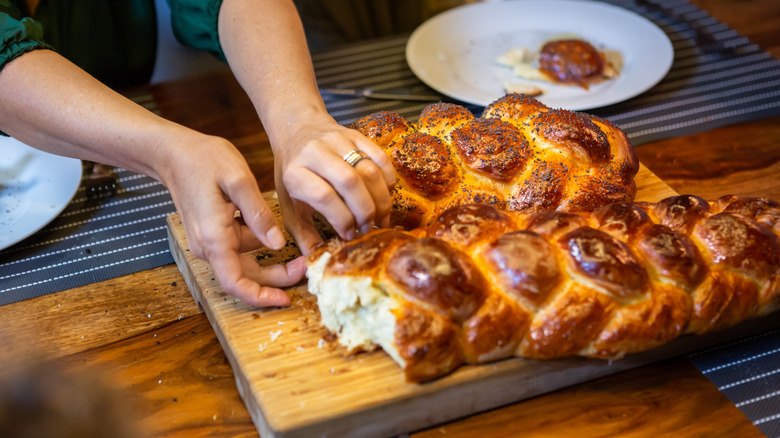Medianoche Is The Cuban Sandwich's Softer, Sweeter Cousin
It's not at all uncommon to find foods that are similar to other foods, including variations of classic recipes. The Rachel, for instance, is a Reuben sandwich with pastrami or turkey and coleslaw instead of corned beef and sauerkraut. Sweet potatoes and yams are often confused for one another despite being totally different tubers. And a patty melt is just a cheeseburger that got fancy with its bread choices. But there are numerous other dishes that are close to something else, yet distinct enough to be their own thing. Enter the medianoche, or "midnight" sandwich.
Are you a fan of the Cubano? For many, the way its hearty mix of pork products, cheese, mustard, and pickles all blend together into a harmonious whole is hard to resist. Well, a medianoche is basically a Cuban sandwich with one notable twist: The bread is different. Have you ever thought, "I like Cubanos, but the bread could be a bit softer?" Then the medianoche is the sandwich for you.
The medianoche and Cubano are extremely similar
The medianoche's distinctive name allegedly comes from when and where it was traditionally sold — after 12 a.m. to night-shift factory workers getting out of work. Interestingly, the bigger question isn't so much why the medianoche has that moniker, but where it originated. There's plenty of debate on this, but the theory is that the Cuban sandwich (and possibly also the medianoche) originated with Cuban immigrants in the Ybor City neighborhood of Tampa, Florida, in the late 19th or early 20th centuries and became associated with Cuba because of travel back and forth between the Sunshine State and the island. It's a point of contention between Cuba and Florida over who first came up with both sandwiches.
Both a Cubano and a medianoche have identical inner components: pork, ham, Swiss cheese, yellow mustard, and sweet pickles. Both are cooked in a sandwich press after the components are assembled, meaning they're served warm and at least slightly crispy on the edges, often with distinctive grill ridges. You can change how you season the pork, and people in Tampa add salami to Cubanos, but other than that, the sandwiches are the same. The biggest difference is the bread.
Medianoches are made with a soft bread called pan suave
Cubanos are made with a particular type of crusty bread (traditionally made with lard, and most commonly found at Cuban-American or Latin-American bakeries) that forms a core part of their identity; this is a sandwich with some chew and crunch to it. A medianoche, meanwhile, is made with a type of bread called pan suave, a soft egg bread that gives the sandwich a texture that's tender and pliant.
If you plan on making a medianoche at home but have concerns about tracking down a loaf of classic pan sauve, there are a couple of analogues that aren't too far off: Namely, challah and brioche. Both are soft, rich egg breads that are very similar to pan suave. Depending on where you live, they may be easier to find than their Cuban counterpart. So, if you're in the mood to try a medianoche and you can't access the traditional bread, look no further than your local deli or supermarket.


